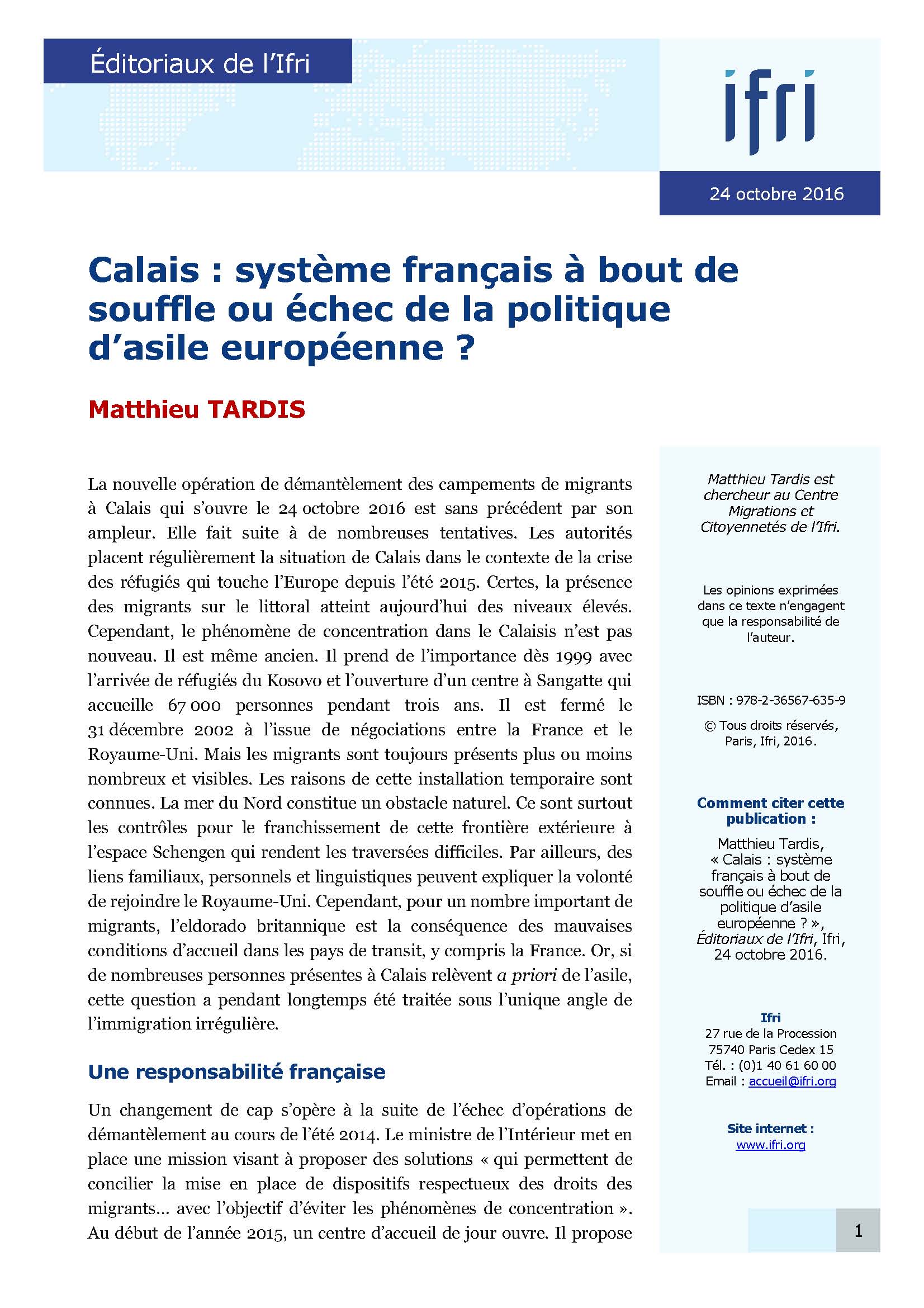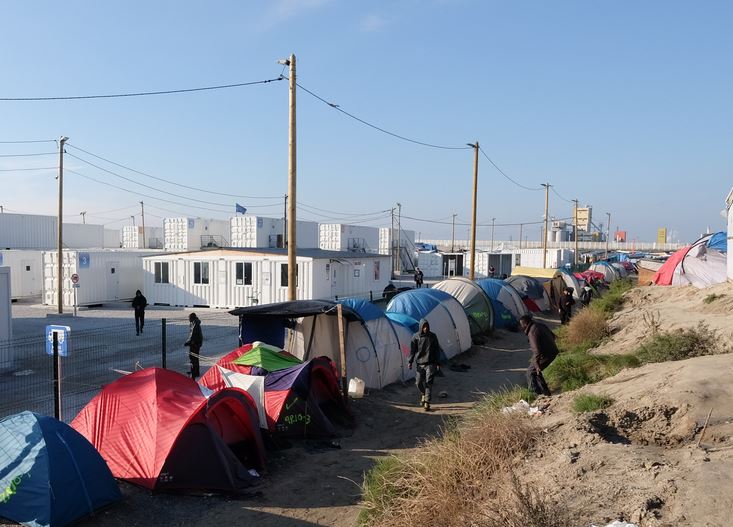Calais: French asylum system out of gas or failure of the European asylum policy?

The Calais’ camp demolition operation that has begun on October 24th 2016 is the most significant ever conducted. It follows numerous failed or aborted attempts to dismantle the shanty town and relocalize its inhabitants.

Authorities often consider Calais as a byproduct of the so-called refugee crisis in Europe. While numbers of migrants have risen on the northern coast since 2015, the phenomenon of concentration is not new in the surroundings of Calais.
It began in 1999 with the arrival of refugees from Kosovo and the opening of a center in Sangatte which hosted about 67 000 people in 3 years. The center was then closed on December 31st 2002 as the result of negotiations between France and the United Kingdom. However, migrants have remained in the area. Reasons for this temporary settlement are well known and obvious: the northern sea is both a natural barrier and an external border of the Schengen area on which controls hinder the opportunities to cross. While some migrants wish to reunite with their family some have personal ties in Britain and many speak English.
Moreover, the desperate conditions of migrants in transit countries – including France – probably contribute to make Britain shine as an Eldorado. Indeed, while most of people in Calais might qualify for asylum, they have for long been considered as irregular migrants.
Download the full analysis
This page contains only a summary of our work. If you would like to have access to all the information from our research on the subject, you can download the full version in PDF format.
Calais: French asylum system out of gas or failure of the European asylum policy?






